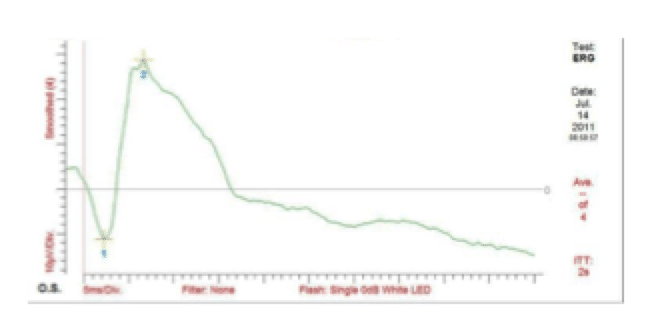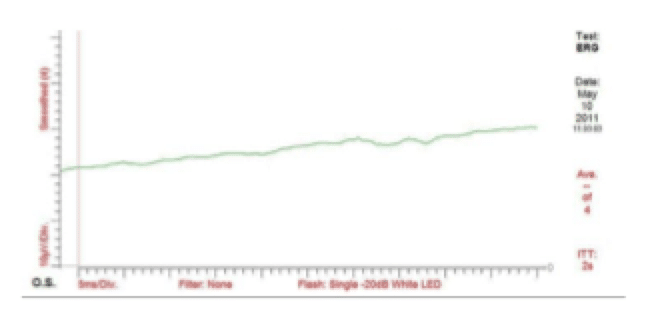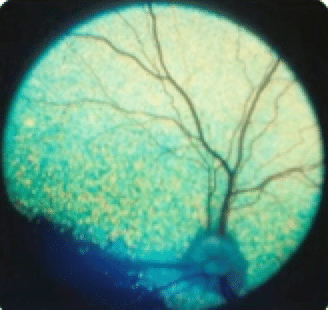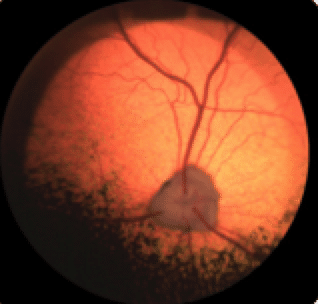Sudden acquired retinal degeneration (SARD) is a condition where there is a sudden onset of vision loss due to a rapid degeneration of the cells of the retina that detect light (rods and cones).
It is yet unknown why this condition occurs, but it is more common in middle-aged to older dogs (6 yrs and older). Dogs affected by SARD often have additional signs such as increased drinking and urination, weight gain, and increased appetite. These signs are very common in dogs with hyperadrenocorticism (Cushing’s disease) where the body is producing too much of its own cortisone (steroid). As of this time, no one has proven a cause and effect relationship between these conditions. Intense stress, such as that experienced with sudden blindness, may also cause many of these additional signs. Recent research studies have supported the theory that SARD is due to an auto-immune retinal condition. At this writing, treatment for SARD is in the experimental stage only.
Dogs affected with SARD have vision loss that occurs over a period of approximately one to four weeks. Ophthalmic examination in this early stage indicates retinal dysfunction, however there is minimal to no abnormalities detected when the retina is viewed. Diagnosis is based upon the above findings, and an additional test called an electroretinogram (ERG). The ERG is a test of the retina’s functioning ability and measures the electrical impulses generated by the cells of the retina. A dog with SARD will have no electrical signals generated by the retinal cells when an ERG is performed.


flat curve indicating a retina that is not functional
Most dogs adapt well to blindness if their environment is not continually changed. The major concern is for the safety of affected animals. Swimming pools are particularly hazardous because blind animals cannot always find their way out if they fall in. You must help your avoid obstacles, pedestrians, bicyclists and automobile drivers who expect animals to move out of the way. You will quickly learn how to be a “seeing-eye” person for your companion. Numerous internet websites and books are available that contain helpful information in helping both you and your pet adapt vision loss.

Visual eye – Nice retinal vessels –
Normal reflectivity of the tapetum (green area)

Aspect is completely normal at the beginning of the disease
(tapetum is orange: normal variation)

